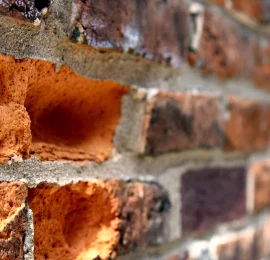Chimney Flashing and Cap Repair: Protect Your Home from Aspects
Chimney Flashing and Cap Repair: Protect Your Home from Aspects
Blog Article
Unlocking the Keys of Lasting Masonry Building Practices for Eco-Friendly Buildings
In the realm of modern building and construction, the quest of lasting practices has actually come to be extremely important. Among the myriad approaches to eco-friendly building, lasting stonework building attracts attention as a tried and true and long lasting technique that holds a wealth of untapped capacity. From the option of products to innovative building methods, the tricks to accomplishing sustainability within masonry construction are complex and appealing. By exploring the advantages, materials, techniques, and future patterns of lasting stonework, a much deeper understanding of how these methods can form the future of green structures arises.
Advantages of Sustainable Stonework Building
Embracing lasting stonework building and construction practices not just minimizes ecological effect however additionally supplies lasting financial advantages to contractors and neighborhoods. By utilizing materials like recycled bricks, obstructs, and stones, building contractors can considerably lower the carbon footprint of their projects while promoting source efficiency. In addition, sustainable masonry building methods, such as appropriate insulation and thermal mass residential properties, can improve energy efficiency within buildings, bring about reduced functional expenses gradually.
Furthermore, the durability and durability of stonework frameworks add to long-term economic benefits. Structures constructed utilizing lasting stonework techniques frequently require less repair and maintenance, translating to set you back financial savings for home builders and property proprietors. The long life of masonry materials also guarantees that structures remain steady and secure, lowering the requirement for regular renovations or replacements.
Eco-Friendly Stonework Products
Making use of green masonry materials is a pivotal step in the direction of boosting the sustainability of construction practices and lessening environmental impact while making best use of long-lasting economic advantages. Sustainable stonework materials are sourced, produced, and utilized in a manner that minimizes total environmental impact. Sustainable concrete blocks include recycled aggregates and might feature improved insulation residential or commercial properties, adding to power performance in structures.
In addition, natural materials like adobe, rammed earth, and straw bundles provide excellent thermal mass residential properties, minimizing the need for heating and cooling down energy. These materials are frequently in your area offered, advertising regional economies and lowering transportation-related carbon emissions. By choosing green stonework materials, building and construction projects can dramatically minimize their environmental footprint and add to the production of healthier, extra lasting built settings.
Energy-Efficient Stonework Methods
Energy effectiveness plays a critical duty in improving the sustainability of masonry building and construction methods. One key energy-efficient stonework method is the usage of thermal mass, which includes incorporating thick products like concrete or brick into the structure's structure to soak up and keep warm.

Advancements in Sustainable Stonework
Current developments in sustainable masonry techniques have caused innovative methods that are reshaping the construction sector. One such innovation is the advancement of self-healing concrete, which uses microorganisms installed within the concrete to heal cracks autonomously. This breakthrough not just reduces maintenance prices but additionally boosts the resilience of stonework structures, adding to their sustainability.
Another significant advancement is the usage of recycled accumulations in stonework building and construction - masonry contractor. By integrating materials such as smashed ceramic waste or recycled glass into concrete blends, home builders can lower the ecological impact of building tasks while maintaining architectural honesty. This method not only diverts waste from landfills however additionally preserves natural deposits, making it a crucial innovation in sustainable masonry find building
Furthermore, the assimilation of digital layout devices, such as Building Info Modeling (BIM), is revolutionizing the way masonry frameworks are planned and built. BIM enables for even more precise computations, decreased product waste, and boosted power efficiency, ultimately causing more sustainable building techniques. These innovations jointly represent a promising future for lasting masonry building and construction in the period of environment-friendly buildings.
Future Trends in Masonry Sustainability
With the ingenious strides made in sustainable masonry methods, the future trends in stonework sustainability are poised to further reinvent the building and construction sector. One of the crucial patterns forming the future of masonry sustainability is the boosted combination of innovation. Innovations such as Structure Details Modeling (BIM) and virtual truth simulations are being used to optimize masonry building and construction procedures, resulting in decreased product waste and improved power efficiency in structures.
Moreover, the growth of novel lasting materials is readied to play a significant function in enhancing the eco-friendliness of masonry construction. masonry contractor. Technologies like self-healing concrete, recycled accumulations, and bio-based binders are gaining traction for their capability to minimize ecological effect while preserving architectural stability

Final Thought
In conclusion, lasting stonework building methods use numerous advantages for green structures. By making use of green products and energy-efficient techniques, stonework can add to an extra sustainable constructed setting. Advancements in lasting stonework are continuously being developed to better improve the ecological performance of buildings. Looking in the direction of the future, the trend of stonework sustainability is expected to expand, bring about even more environmentally pleasant and energy-efficient building and construction methods in the years to come.
Report this page